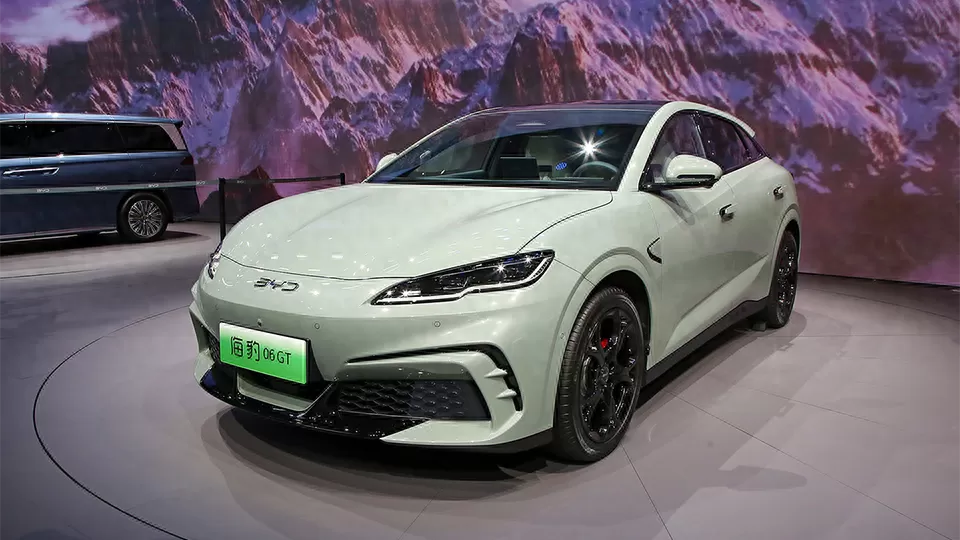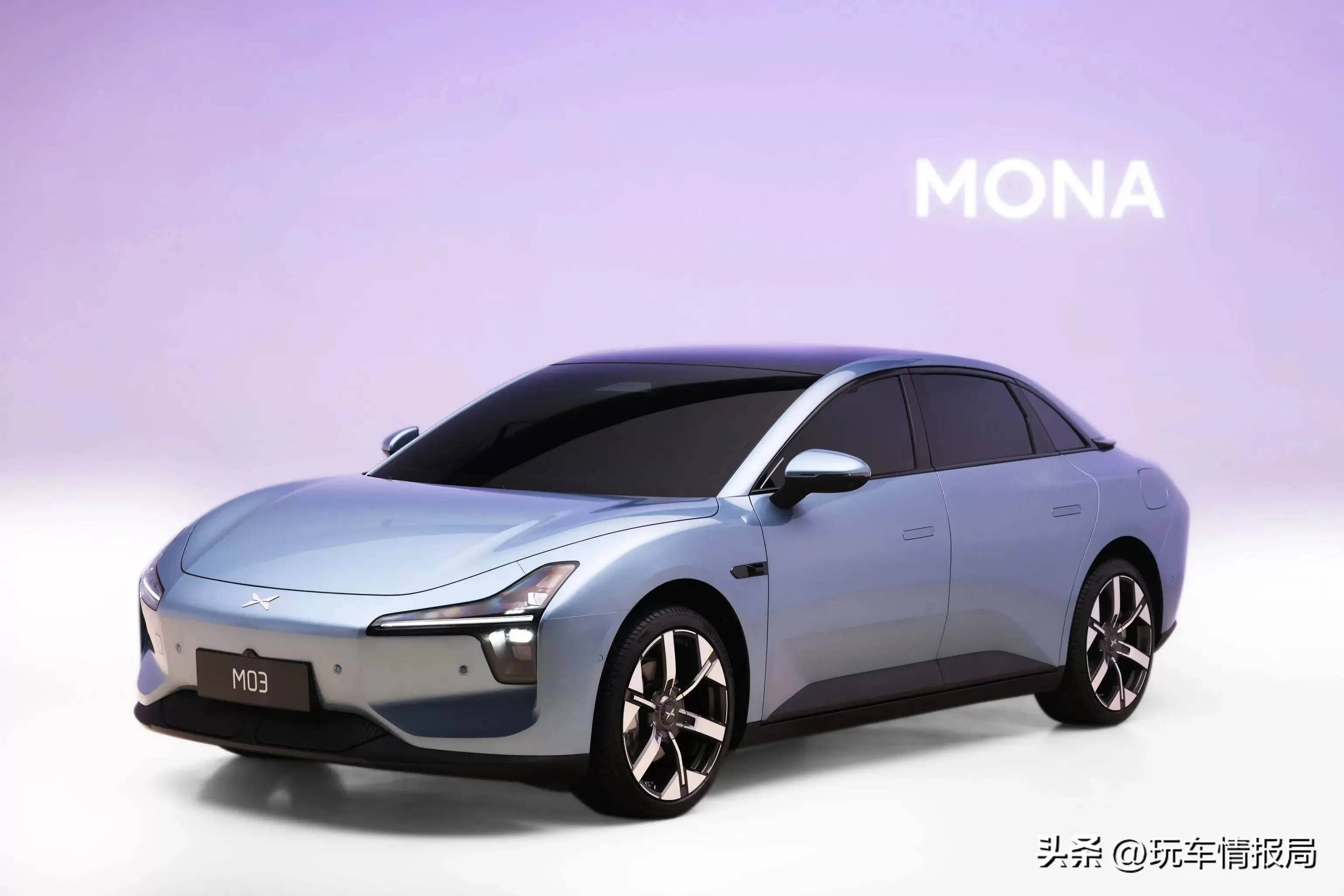From the A0-class to the C-class market, BYD has already achieved sales dominance. However, they still need to create a new car—one that caters to a niche market while still meeting daily driving needs, offering sporty handling while balancing comfort, and most importantly, being affordably priced. We're talking about a hatchback. When looking at this segment, there hasn't been a true, long-lasting best-seller like the Golf or the Fit in the domestic lineup. Can BYD take the lead and make a change?
After this year’s National Day holiday, BYD will officially launch the Seal 06 GT. The new car debuted two months ago at the Chengdu Auto Show and announced a pre-sale price range of 150.000 to 200.000 RMB. The confirmed technical features include: 1) Built on the e-platform 3.0 Evo, featuring rear-wheel drive, a CTB skeletal battery system, a 12-in-1 intelligent electric drive, fast charging, and a wide temperature range heat pump; 2) Not much has been revealed about intelligent driving, but the high-level DiPilot 100 system will definitely be included—whether it comes as standard remains to be seen; 3) Two powertrain options: single motor rear-wheel drive and dual motor four-wheel drive, with iTAC intelligent torque control and FSD variable damping shock absorbers. So, what other strengths does the Seal 06 GT offer?

With a 2.82-meter wheelbase rivaling B-class cars, the Seal 06 GT boasts the largest space in its class
To give a hatchback space comparable to a sedan might seem counterintuitive. After all, in our previous understanding, hatchbacks are generally compact with dimensions typically in the A-class range—like the Golf, Fit, Civic Hatchback, and MINI Cooper—with wheelbases around 2.6 meters and lengths between 3.8 and 4.5 meters. The usual downsides of these models are cramped seating and small trunks. So how do you ensure ample legroom and headroom for rear passengers while maintaining a decent trunk space? The answer lies in the wheelbase-to-length ratio.
In theory, the higher the ratio of wheelbase to length, the more interior space can be achieved. This leads to two possibilities: either lengthen the wheelbase or shorten the body. Shortening the body is impractical, so the most common solution is to extend the wheelbase, often by reducing the rear overhang, thus bringing the rear wheels closer to the back of the car. The result can be described as “four wheels at four corners.”

Compared to the side profile of the Seal 25. you can see that the rear axle of the Seal 06 GT is closer to the back of the car. Even when compared to the Golf and Civic Hatchback, it’s clear that the Seal 06 GT has a shorter rear overhang. The Seal 06 GT surpasses the traditional 4.5-meter length of hatchbacks, measuring 4.630mm in length, 1.880mm in width, and 1.490mm in height, with an impressive 2.820mm wheelbase. Why use the word “impressive” to describe a wheelbase over 2.8 meters? It’s not just because this dimension enters near-B-class sedan territory, but also because the Seal 06 GT is currently the only hatchback in this class with such a wheelbase.
The shortened rear overhang makes room for a longer wheelbase, which is most apparent in the increased legroom for rear passengers. Like in many other design cases we’ve discussed, the rear seats are pushed towards the rear wheel arches. A supporting detail is that the rear door panels of the Seal 06 GT are longer than those of regular hatchbacks. As for trunk space, this is optimized through the D-pillar. Instead of abruptly ending at the C-pillar, as is typical with hatchbacks, the roofline extends towards the D-pillar, like in traditional SUVs. This approach has two benefits: it increases trunk space and maintains an aesthetically pleasing design. This dual purpose is one of the greatest advantages of GT models over traditional hatchbacks or sedans, combining both beauty and practicality.

From this, we can draw some initial conclusions. The BYD Seal 06 GT effectively solves the typical hatchback drawbacks of limited space and impractical trunks, while its low, wide stance exudes a powerful presence. BYD even showcased a concept version at the Chengdu Auto Show featuring a large front splitter, an oversized rear spoiler, and a deep orange paint color similar to that of the Lamborghini Aventador. These elements suggest that the Seal 06 GT embodies the spirit of a GT car not only in its design but also likely in its driving performance.
Rear-wheel drive balances comfort and sportiness, while the four-wheel drive version has a “hot hatch” flavor
For a rear-wheel drive, pure electric "hot hatch," our primary concern is, of course, its driving performance. According to confirmed information, the new car will be priced from 150.000 to 200.000 RMB, with two rear-wheel-drive versions and a four-wheel-drive version as the top model. The car will come standard with a front dual-ball-joint MacPherson independent suspension, and a rear multi-link setup. This suspension is already quite advanced in terms of comfort tuning, and with BYD's long-standing use of FSD variable damping shock absorbers, even the entry-level 150.000 RMB Seal 06 GT is expected to offer performance comparable to higher-priced models.
In fact, in the 100.000 to 200.000 RMB range, it’s common to see a MacPherson plus multi-link suspension setup. Some models even still use a cheaper but more challenging torsion beam setup for the rear suspension. The dual-ball-joint MacPherson setup on the front suspension of the Seal 06 GT is not only more expensive but also more complex in structure compared to the traditional MacPherson design. The lower control arm is split into two links: a front lower control arm and a rear lower control arm, providing two points of connection between the suspension and the steering knuckle. This allows lateral and longitudinal forces to be separated, effectively extending the lifespan of the bushings and ball joints and reducing the space needed for steering. In other words, this setup enhances handling and steering precision.

However, this design also has downsides. Due to its complexity, maintenance costs are higher, and the steering is heavier than in a traditional MacPherson setup. From a performance-oriented driving perspective, heavier steering might fit the car’s sporty intent. Of course, there are ways to optimize steering effort, such as adjusting the steering column bearings or the ECU.
This suspension setup further emphasizes that the Seal 06 GT is a sporty hatchback. The iTAC intelligent torque control system adjusts torque distribution based on wheel traction, which is particularly important for a rear-wheel-drive electric vehicle. Additionally, according to BYD, the rear-wheel-drive version comes with 18-inch wheels, while the all-wheel-drive version gets 19-inch wheels. The rear-wheel-drive version also has a higher tire profile, with a ratio of 50 (compared to 45 for the all-wheel-drive), indicating a focus on balancing comfort with sportiness, especially for the rear-wheel-drive version.
By analyzing the power output, we can further confirm this conclusion. The rear-wheel-drive version comes in two power levels, with the lower one producing 160 kW, matching the high-end electric MINI Cooper. The former has a top speed of 200 km/h, while the latter maxes out at 170 km/h. The Seal 06 GT has a slight advantage on paper, but it’s not overwhelming. For daily use, both the 160 kW and 165 kW rear-wheel-drive versions are sufficient, and the chassis and suspension are capable of handling occasional spirited driving. Thanks to its “four wheels at four corners” design, the Seal 06 GT is inherently suited for good handling. However, the true "hot hatch" is the 310 kW all-wheel-drive version, which can accelerate from 0 to 100 km/h in 4.9 seconds.
In terms of power among BYD's electric models, the Seal 06 GT’s dual-motor system ranks third within the brand. First is the Seal 600 four-wheel-drive intelligent version (390 kW), followed by the 2024 Tang EV flagship (380 kW). The Seal 06 GT, being the smallest of the three, shows that BYD has held back on creating a true electric "hot hatch." The final question is: how will it be priced?






